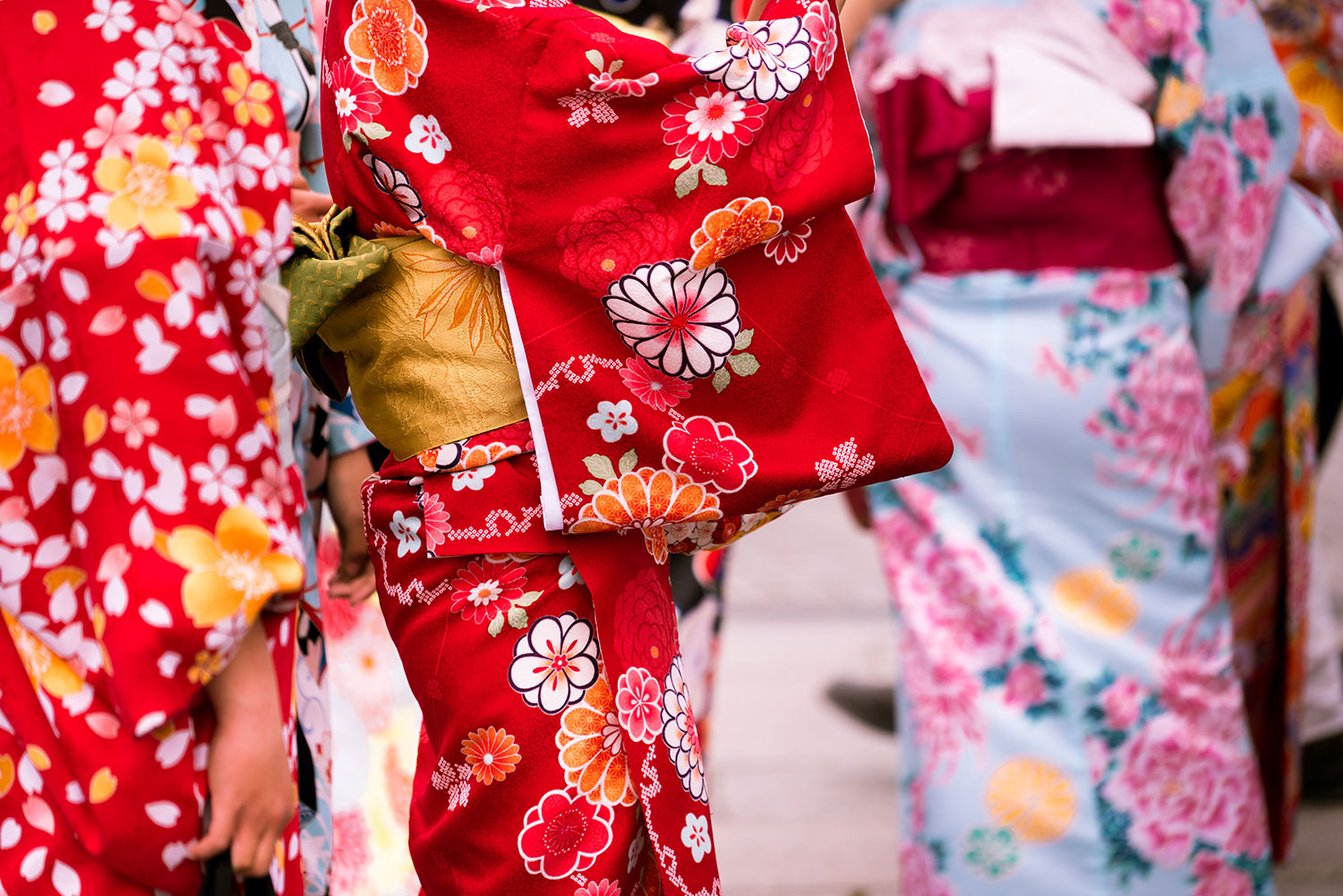

KIMONO – TRADITIONAL JAPANESE CLOTHING
The word ‘kimono’ means literally “a worn object,” which is why it originally denoted any garment. This traditional Japanese T-shaped outfit with a simple design resembling a dressing gown differs in terms of comfort and simplicity from our regular clothes. First of all, the technique of putting on a kimono is strictly defined and just getting dressed in a kimono can be complicated and tiring, even if you know the rules. This is why the activity needs assistance, usually of licensed specialists, who also do the wearer’s hair the right way.
Traditional Japanese women’s clothing
Women wear different kimonos depending on the event, age and marital status. It is also relevant whether the occasion is public or private. Learn more about women’s traditional clothing below.
Kurotomesode is the most formal Japanese kimono, reserved for married women. This black garment with rich ornamentation made of silk crêpe is worn during a wedding ceremony by the mothers of the bride and the groom. The family coats of arms, so called ‘kamon’ embroidered on the chest, back and sleeves, are particularly important.
Furisode is a formal garment of similar rank, with rich ornamentation along the whole kimono. It is reserved for girls participating in the Coming of Age Day and wedding receptions and ceremonies. This traditional Japanese kimono has characteristic long, falling sleeves, 100 to 107 cm. It must be added that a wide belt obi is worn with Furisode and Kurotomesode.
Irotomesode is a garment usually worn at weddings by married women or close relatives of the bride and the groom. It is single-coloured and has 3 to 5 coats of arms (kamon).
Montsuki is quite often worn at funerals. If ladies wish to emphasise a more formal nature of their outfit, they put on an embroidered coat – ebaori. Montsuki may be ether plain or covered with a delicate pattern.
Hōmongi is a less formal Japanese kimono. It is often chosen for wedding receptions and ceremonies by the friends of the groom and the bride. Women can put it on regardless of whether they are single or married. Tukesage is a slightly more modest version of that kimono.
Iromuji is the type of kimono to be worn at the tea brewing ceremony. The women’s marital status is also irrelevant here.
Komon is a casual outfit, decorated with a fine repetitive pattern covering the whole kimono. It is worn by both single and married women.
Yukata is a cotton summer kimono. It can be worn by both women and men.
Traditional Japanese men’s outfit
Japanese men’s kimonos come in one cut and in subdued colours. The nature of the event for which it is being worn is emphasised by accessories and their colours, and – as is the case for women’s clothing – the number of kamon.
The fabric of a Japanese kimono is also relevant. Those made of silk are reserved for important events, while cotton garments are put on for casual situations or less formal occasions. Regardless of whether it is meant for a man or a woman, a kimono for a person of regular size is made of just one roll of fabric that is 11 m long and 36 m wide. The material is divided into 8 parts and then sewn together for the right size. Curiously enough, thus sewn traditional Japanese outfit originated between 794 and 1192 AD, and it has remained basically unchanged ever since.
Japanese kimono – how popular is it nowadays?
A traditional Japanese kimono is not the most comfortable of garments. If it were not enough that it takes time and the assistance of other people to put it one and take it off, it is not too comfortable in use. It constrains and restricts movements, enforces a straight body posture and it is hard to sit in it.
Keeping a Japanese kimono clean is not easy either as it must be torn at stitches before every washing and once dry – sewn back. This is why the Japanese only wear the traditional outfit during major celebrations and holidays, such as New Year, Children’s Day, Coming of Age Day or weddings, university graduations, baptisms and funerals. Another reason why they do not wear it on a daily basis is the price – gathering all the necessary elements of a kimono is a cost of roughly 20,000 dollars. Probably that is precisely why wearing the traditional outfit today emphasises high social status and is an attribute of Japanese aristocracy.














